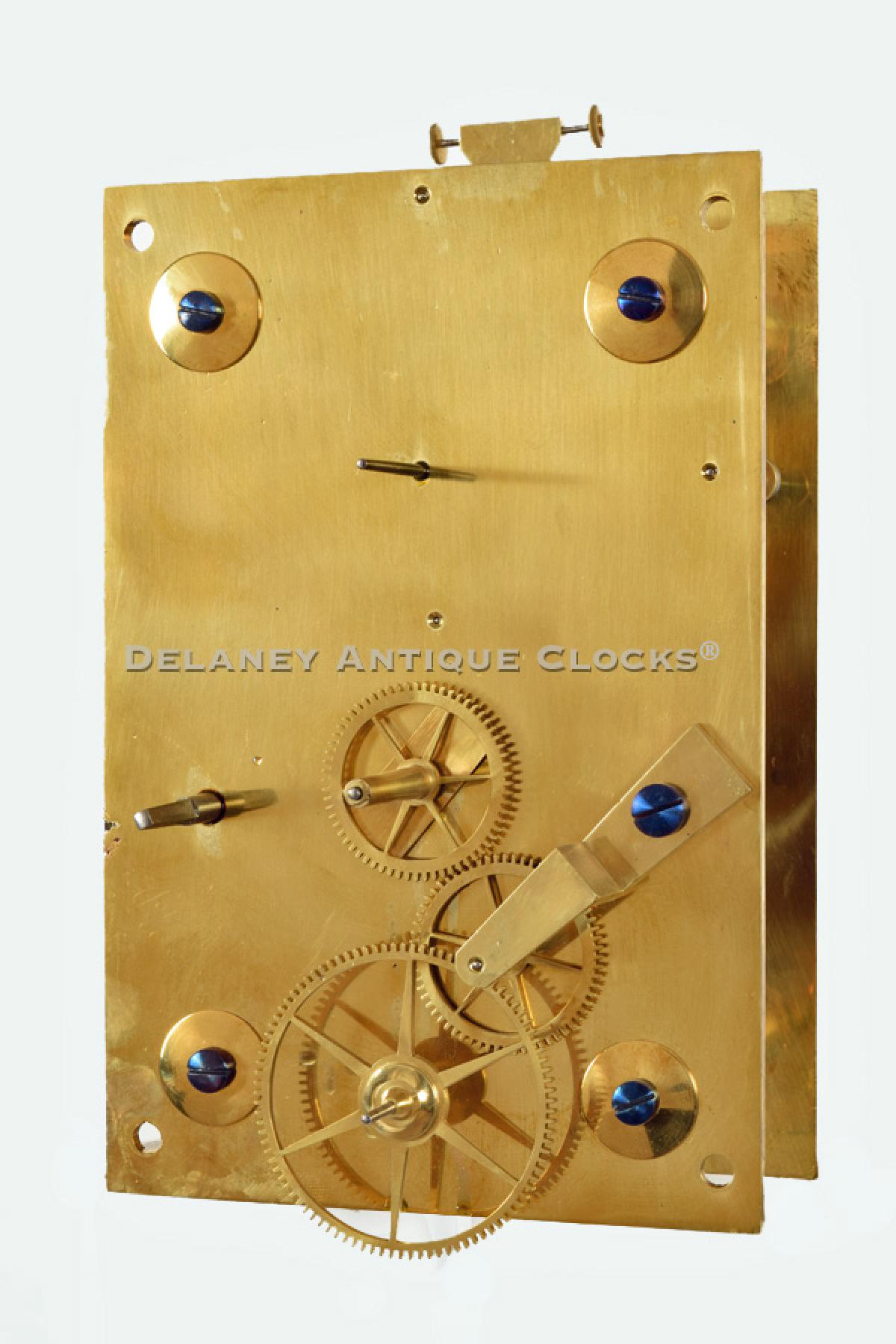Triggs & Sons Guildford, UK. A Victorian Arch Topped Floor Standing Astronomical Regulator. YY-76.
This fine-grade astronomical regulator was made in England by Triggs & Sons in Guilford, England, circa 1850. This jeweler’s regulator is designed to be a good timekeeper. The case presentation is excellent.
This eight-day regulator movement is of good quality. The cast brass plates are heavily constructed. Four large pillars or posts are screwed through the front, and back plates are used to support them. The movement features a dead-beat escapement; the pallet facings are jeweled, the gearing is light and designed with six crossings, and the pinion count is high. Other features include Harrison’s maintaining power and fine adjustments for the beat, located at the back of the movement on top of the crutch. A heavily constructed bridge mounted to the backplate carries or supports the pendulum. The pendulum features a flat steel rod that supports a single glass jar intended to hold a volume of mercury. (We currently have this jar filled with foil. Mercury is available to the buyer. ) Mercury is used for temperature compensation. This jar is supported by a steel cradle trimmed with brass elements. The cradle also incorporates a fine regulation adjustment in the design. The brass weight features a decorative shell and hangs from a wonderfully formed pulley.
The brass circular-shaped dial measures 12.5 inches in diameter. The brass surface is engraved in an astronomical format, having individual dials for the seconds, minutes, and hour displays. Please note that the hours are demarked in Roman form and are displayed in the traditional 12-hour format. The minute ring is closed. The Maker’s name is engraved across the middle of the dial in block letter format. This brass dial is treated with a silver wash for contrast. The three hands are blued steel and original to this clock.
The case is constructed in mahogany and features flamboyantly figured mahogany veneers. These selections of veneers are first-rate and used not only in the flat sections of the case design but also on all moldings. This case is elevated up off the floor on four shaped pad feet. These are applied to a molding that transitions up to the base with a deep cove-shaped molding. The base features a large inset panel. This panel features a fantastic selection of book-matched mahogany veneer. The grain pattern radiates up and outward. The veneer patterns selected to frame this panel accentuate the grain pattern exhibited in the central panel. The quarter round and cove molding that transitions the base section to the waist is also veneered. The waist section features a large door that is fitted with glass. This door is hinged on the right and locks closed with two locks mounted on the left side of the case. Through this door, one can view the dial, pendulum, brass-clad weight, and Victorian-formed wooden latticework. This lattice decoration is wonderfully carved and is positioned in such a manner as to frame the lower side of the dial. The sides of the case are fitted with long rectangular-shaped windows. These allow additional light into the interior of the case. The result is that it is nicely illuminated.
This fine case is a modest size. It measures approximately 6 feet and one-half inches (72.5 inches) tall to the top.
Inventory number YY-76.










